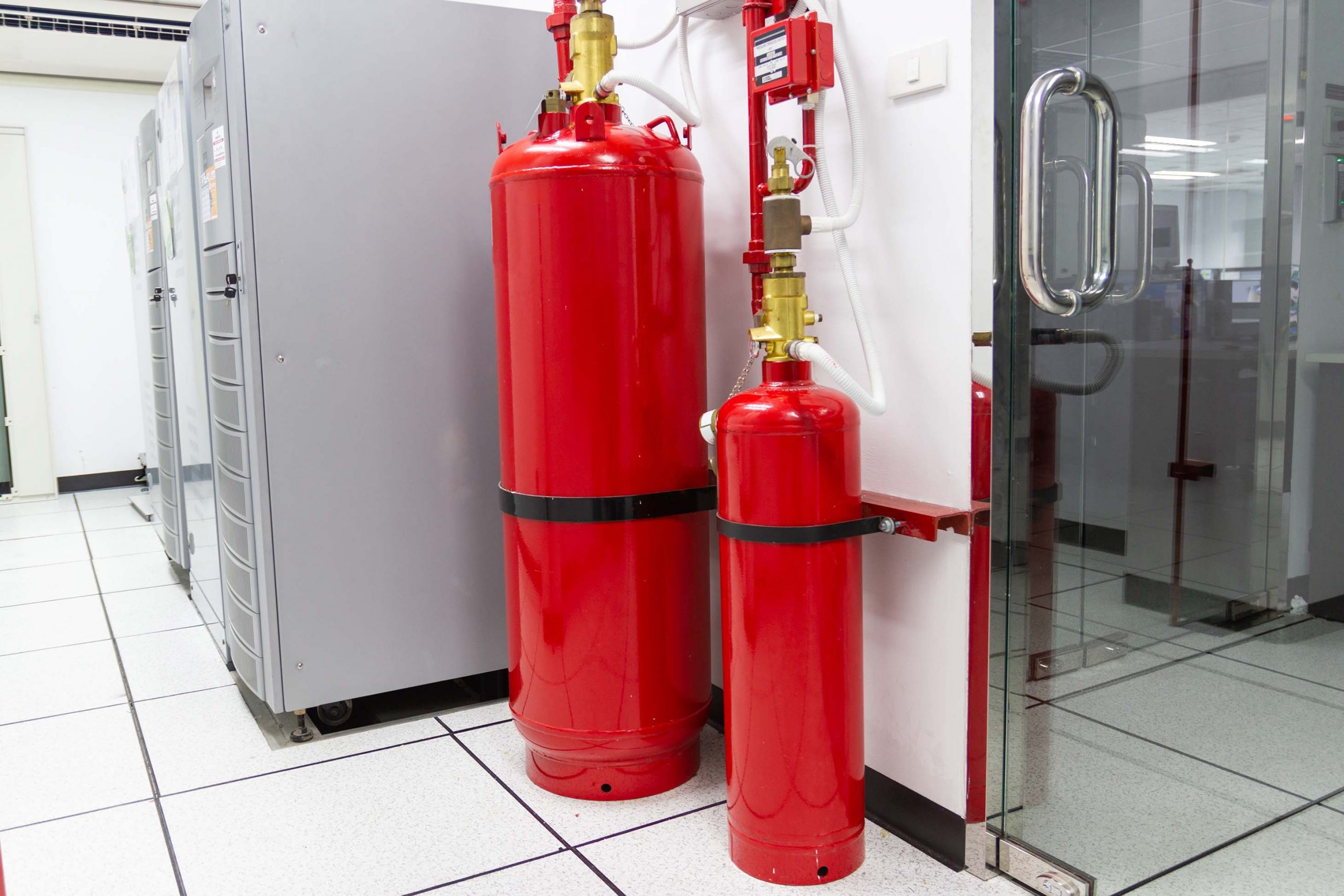Clean Agent Fire Suppression: How it Works & Why You May Need It

Fire codes exist to make sure that buildings have adequate safety measures to protect the people who live and work in them. For owners of office buildings, such safety measures are a legal necessity; but many owners also need to implement additional fire suppression measures for specialized, enclosed areas in their buildings, such as server rooms, telecom switching rooms, and storage areas for paper documents or other important materials, to name a few examples.
In the case of servers, routers, and related electronics, the need is not only to protect the actual equipment; even more significantly, it’s about ensuring the continuity of an organization’s essential functions.
The role of clean agents
The most widely-used approach for protecting the areas mentioned above is clean agent fire suppression technology. Although there are currently no specific codes that mandate how such areas must be protected, once you decide to install clean agent fire technology, there are specific design, installation and maintenance standards you must meet, outlined in standards promulgated by the National Fire Protection Association (NFPA).
NFPA defines the term “clean agent” as an electrically non-conductive, volatile, or gaseous fire extinguishing agent that leaves no residue upon evaporation. In practice, clean agents are stored in containers in or near the enclosed area being protected, and discharge the agents to extinguish fires while they’re still in the very beginning stages.
People are most familiar with water-based fire suppression systems — i.e., fire sprinklers. But using water to put out fires in areas with electronic equipment or other sensitive material risks destroying the very assets that one is trying to protect. Just as importantly, in the case of servers and other critical equipment, extinguishing the fire with water could interrupt systems or capabilities that need to be available 24/7/365.
That’s where clean agent solutions come into play, since they extinguish flames without the use of water. Instead, they use one or more of various gases to put out the fire, which has the distinct advantage of not affecting electronic equipment or leaving residue that must be cleaned up.
One critical element of the system is what’s known as very early warning smoke detection. There are different types to choose from, based on the desired level of sensitivity and other factors. For example, some systems are designed to respond to particulates of a certain size or a specific type of combustible material. Once the detection system is triggered, it issues audible and visual warnings and, after a preset time, the fire suppression agent begins to discharge, flooding the enclosed area with a gas that lowers the concentration of oxygen to the point that it extinguishes the flame. Systems also include an abort switch that allows an individual to pause the countdown while workers evacuate the area.
Design Considerations
Clean agent systems have certain technical requirements. The first is that the space being protected must be tightly sealed— extremely tightly. The higher the airtightness of the room, the more effective the gas will be in extinguishing the flames. As a result, it’s critical for your contractor to seal as many gaps in the space’s envelope as possible before installing the system.
The second important consideration is having sufficient amounts of the selected clean agent, as well as the related apparatus (storage tanks, valves, etc.). The location of the tanks depends on the type of clean agent material one uses. Some systems use chemicals that are both stored and released as gases, and they can be located further from the area to be protected. Other systems use chemicals stored as liquids that are dispersed as gases, and these generally need to be located within the area being protected, or in a dedicated closet immediately outside it.
There are no requirements to have clean agent fire suppression technology installed in a building. However, if you as the building owner do decide to have such a system designed and installed, your contractor must adhere to NFPA standard 2001. (Additional standards may also need to be taken into account, such as NFPA 75 for the protection of IT infrastructure and NFPA 76 for telecom facilities.)
It’s important to understand that having a clean agent fire suppression system designed and installed is not cheap. On the other hand, one has to consider the value of ensuring continuous operations, as well as the cost of losing sensitive equipment or other high-value assets. It’s also important to know that it’s not a “one and done” effort. After you have it installed, you need to have it properly maintained by a capable provider, including recharging the equipment if it has been discharged.
Next Step: Talk with a Qualified Partner
If you have spaces within your building that require clean agent fire suppression, you probably already know it. But if you do decide to install such equipment, it’s important to work with a firm that is fully familiar with NFPA design and operational standards, as well as the science and chemistry involved.
While the system is ultimately designed to make life easier for you and your tenants, there are many specific details that need to be measured, planned and implemented with precision in order to get the protection system you need. The critical nature of the equipment or other assets you’re protecting requires nothing less.
Adam Paterson, PE is a senior fire protection engineer at Summer Consultants with 15 years of engineering study and design experience. Adam specializes in the design of fire suppression, fire alarm and mass notification systems and has expertise in life safety code consulting including NFPA 101.

Comments